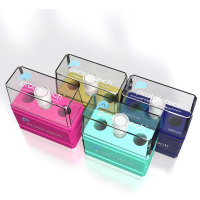Balloon Injury in Rats as a Model for Studying TRP Channel Contribution to Vascular Smooth Muscle Remodeling
互联网
511
Many vascular occlusive diseases are characterized by endothelial dysfunction and phenotypic switch of vascular smooth muscle cell (VSMC) from quiescent contractile to proliferative migratory phenotypes. These cellular responses can be recapitulated and studied in vivo in animal models of vascular injury. A typical example is the balloon injury model which causes endothelial denudation and distending mural injury in the operated blood vessel wall. VSMCs respond to this vascular injury by enhanced proliferation and migration, neointimal growth, and subsequent vascular occlusion. In these protocols, a balloon catheter (a catheter with a tiny balloon at the tip) is inserted into a blood vessel (usually the carotid artery) lumen and then the balloon is inflated and dragged in the vessel in order to cause endothelial denudation and distending mural injury. Many ion channels, including isoforms of STIM/Orai and transient receptor potential (TRP) channels have showed altered expression during the process of VSMC phenotypic switch. The vascular injury model offers means to study the in vivo contribution of changes in expression of these ion channels to vascular occlusion. After injury, expression of TRP channels in injured vessel section can be altered positively or negatively by transducing these vessel sections with viral particles encoding either cDNA clones or shRNA constructs specific to a given ion channel.









